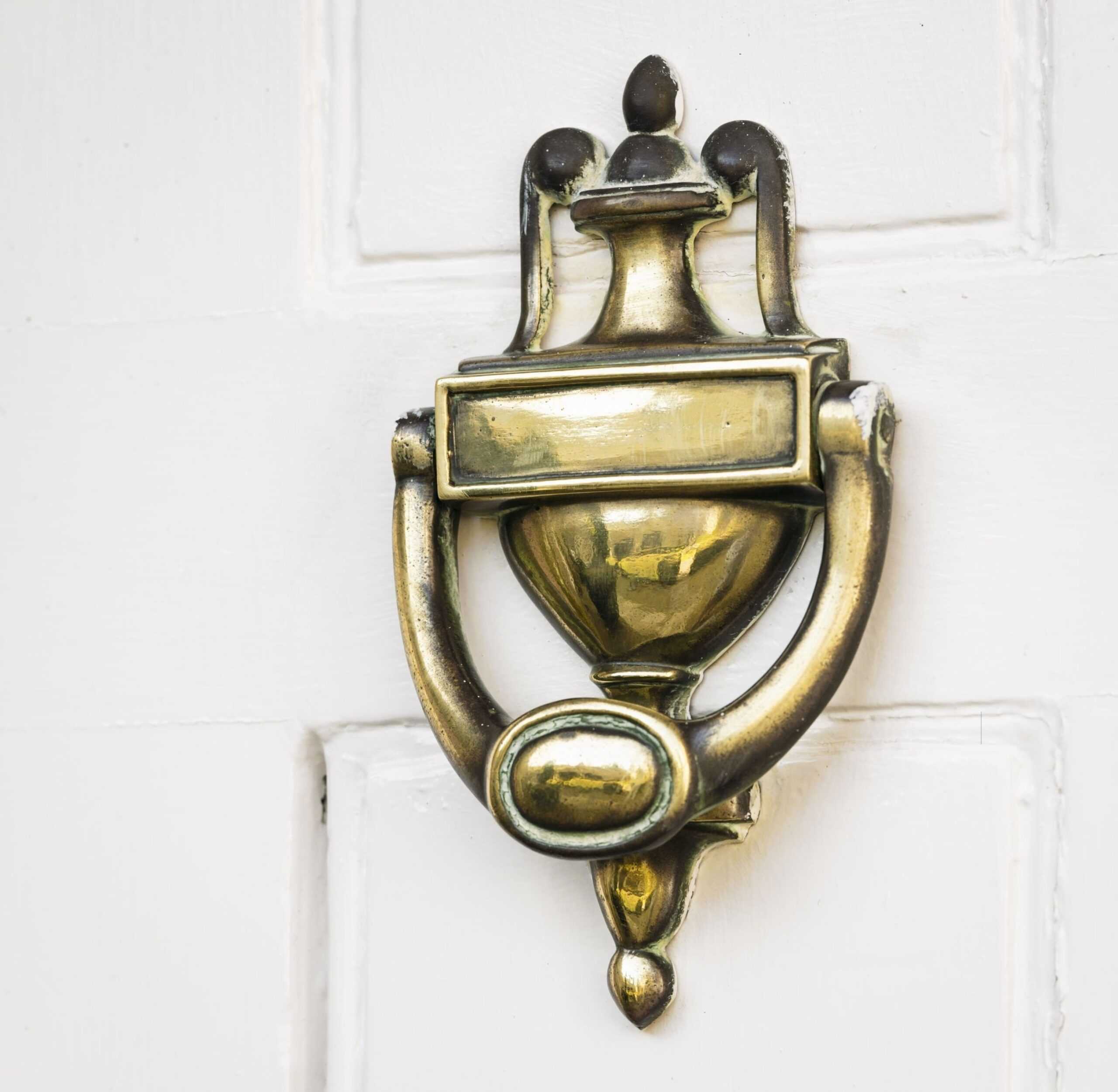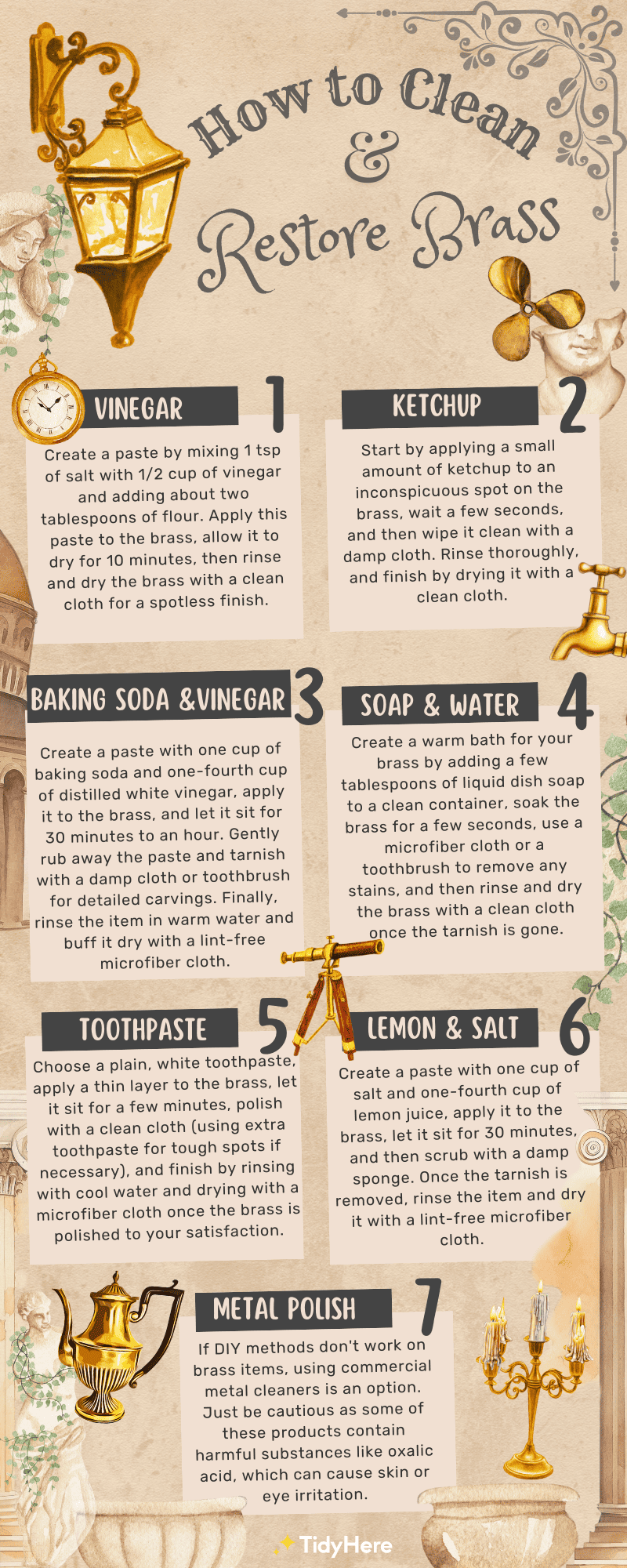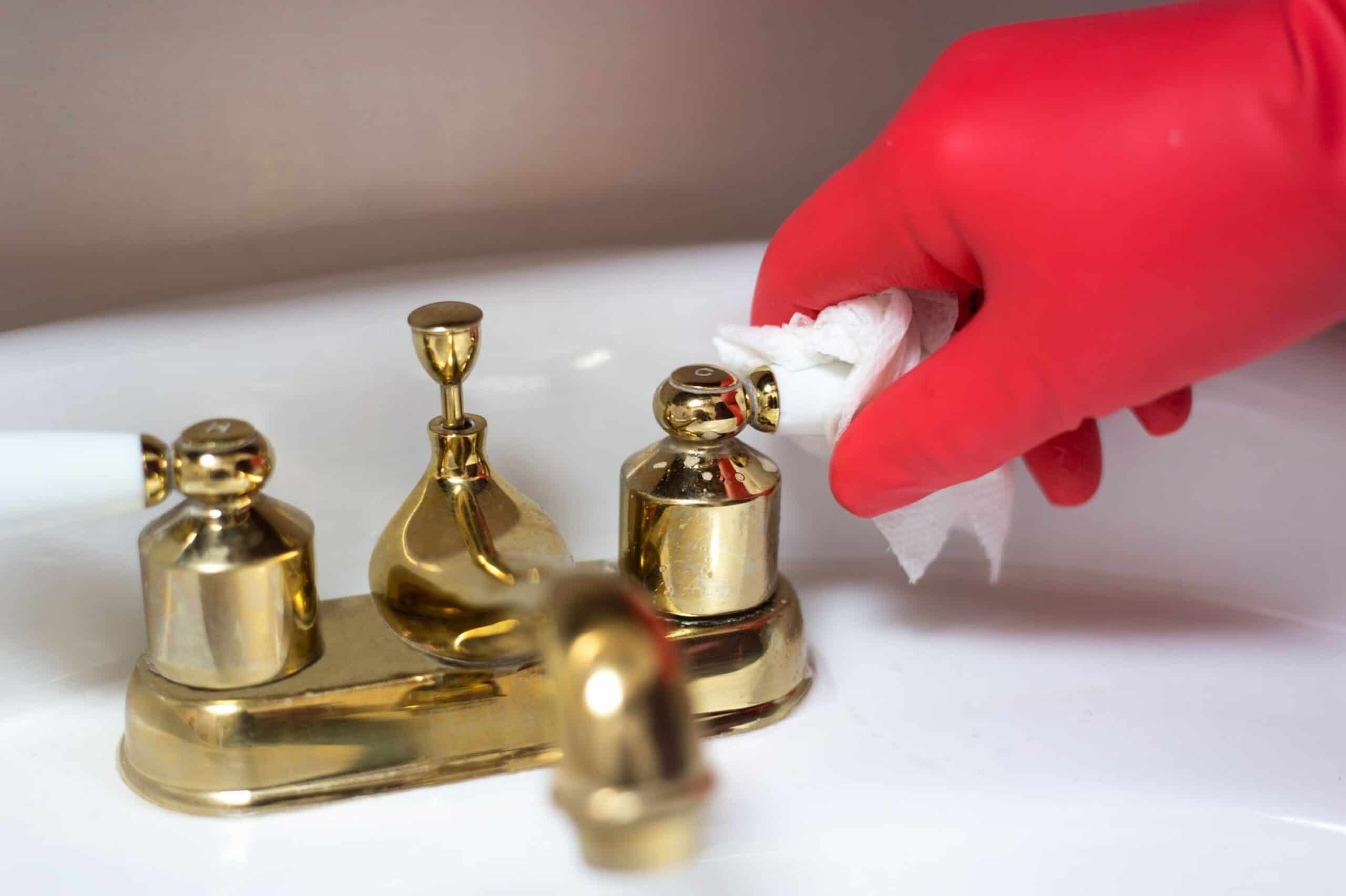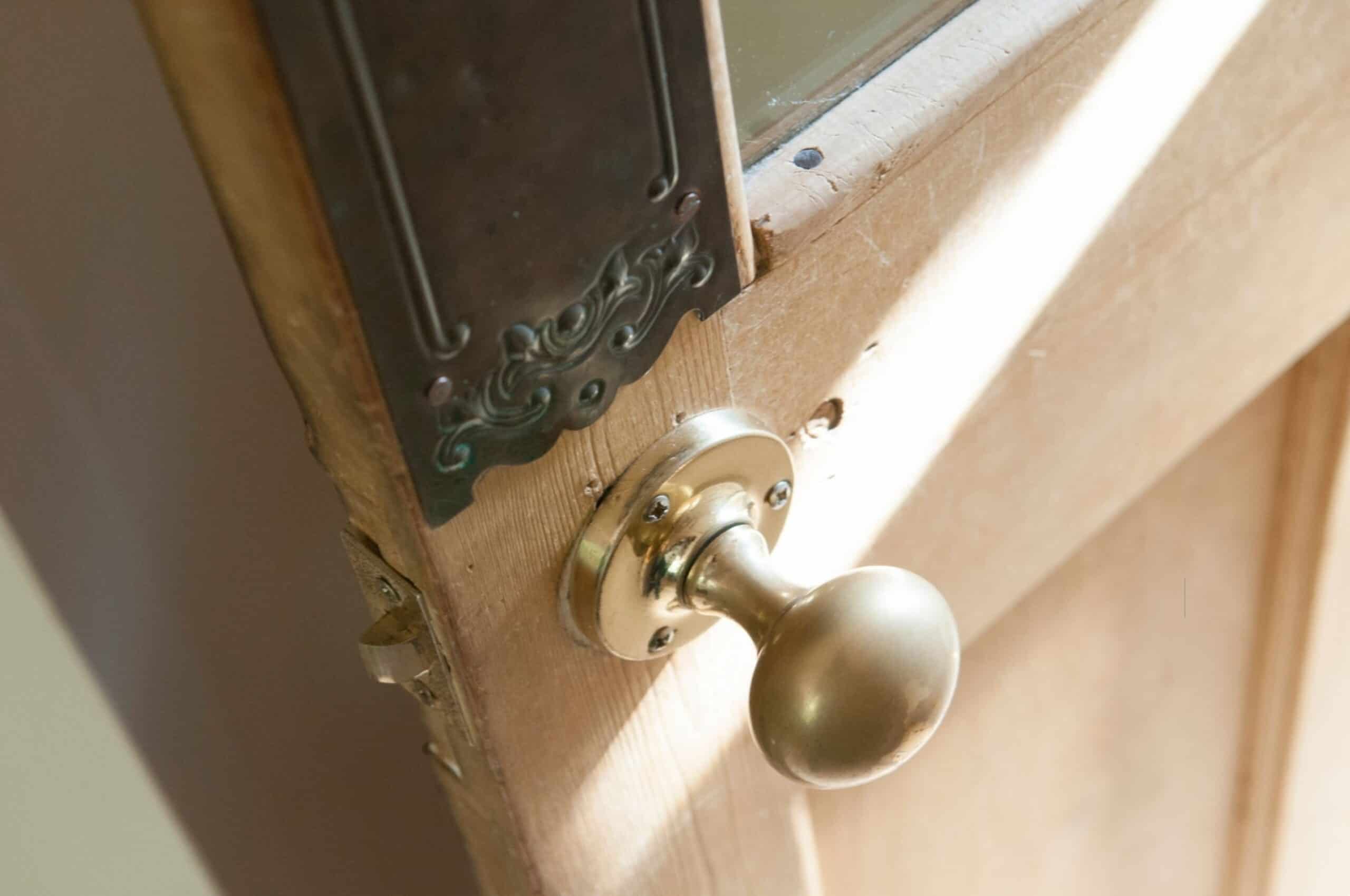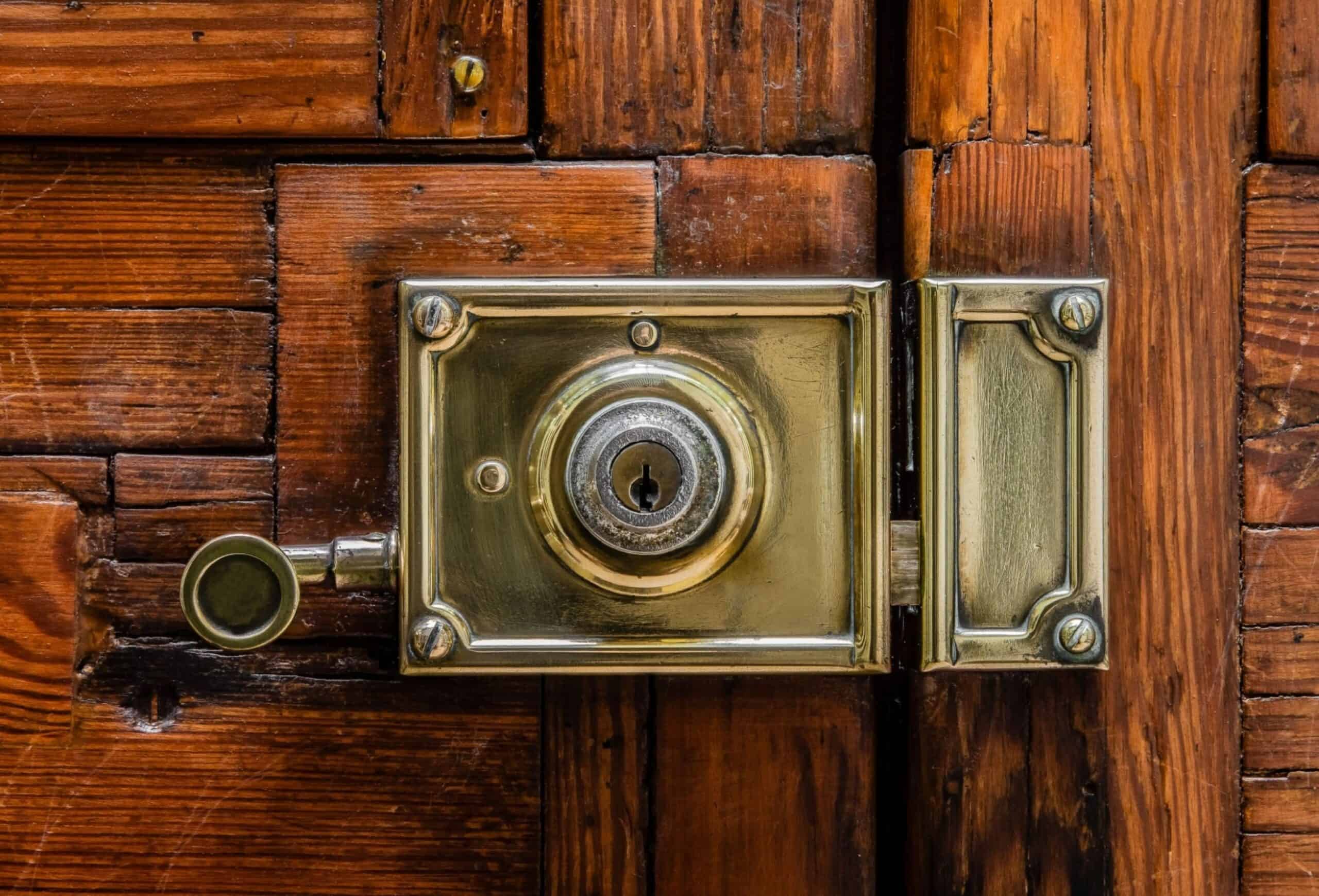Brass can make for truly beautiful home decor as a classic-looking metal alternative to modern chrome and stainless steel finishes. It is an alloy of copper and zinc and has been used for centuries to create hardware for doors, buttons, musical instruments, and decorative objects. However, as much as brass has a timeless appearance and place in home interiors, the material itself can be worn down as the years go by.
When your uncoated brass pieces come in contact with oxygen or with natural oils from the skin, they can tarnish more quickly. While the tarnish generally isn’t corrosive, it can darken and dull the surface, making the brass look dated and dirty.
While some might prefer the vintage look of unpolished brass, it is still good to know how to keep it clean. Luckily, we have a few DIY methods of cleaning and restoring brass that anyone can try using products from around your house. Keep reading to find out more!
How Often Should Brass Be Cleaned?
The more brass is used and handled, the quicker it can tarnish, so to keep brass hardware on doors, cabinets, and sink fixtures shiny, you should clean and polish them monthly. Decorative pieces should be cleaned once or twice each year or as tarnish appears. Lacquered brass items should only require dusting and gentle wiping with a damp cloth as needed.
What Are the Best DIY Methods?
There are a few ways to clean solid brass using DIY and homemade brass cleaners. The best method for your situation depends on just how much dust, dirt, or tarnish is on the brass piece. Here are a few tips and techniques to try, beginning with the simplest.
How to Clean Brass with Vinegar
To make tough stains disappear, combine salt’s abrasive power, vinegar’s acid, and all-purpose flour as a thickener.
✨ In a medium-sized bowl, add 1 tsp. salt to 1/2 cup vinegar. Stir the mixture until the salt dissolves.
✨ Add enough flour to the salt/vinegar mixture to make a paste (about two tablespoons).
✨ Rub the paste onto your brass object and let it dry for 10 minutes.
✨ Rinse, wipe clean, and thoroughly dry the brass with a clean cloth.
How to Clean Brass with Ketchup
Who would have guessed that your favorite burger topping could double as a brass cleaner? Ketchup’s mix of tomatoes, spices, and vinegar is a cheap, straightforward way to revive old brass. This simple cleaning hack requires only the condiment and a few cleaning cloths.
✨ Start by squirting a small amount of ketchup onto the brass in an inconspicuous spot, such as the bottom. Let it sit for a few seconds, then wipe clean with a damp cloth. If it works well, repeat on the remainder of the brass piece.
✨ If the test is successful, apply ketchup to the brass item and let it sit for a few seconds. Wipe the item clean using a damp cloth.
✨ Rinse thoroughly and dry with a clean cloth.
How to Clean Brass with Baking Soda, & Vinegar
✨ Submerge the brass item in warm, soapy water (using liquid dish soap) to remove dust and grease. If the piece cannot be submerged, dip a cloth in the soapy water and wipe away loose dirt.
✨ Make a paste of one cup of baking soda and one-fourth cup of distilled white vinegar in a bowl large enough to accommodate the fizzing.
✨ When the fizzing stops and the paste settles, spread it onto the brass with a sponge. Allow the paste to remain on the brass for 30 minutes, but no more than one hour.
✨ Use a damp cloth to gently rub away the paste and the tarnish. If the brass has detailed carvings, an old toothbrush works great to get into small crevices and remove the tarnish.
✨ Thoroughly rinse off the item in warm water and buff it dry with a lint-free microfiber cloth.
How to Clean Brass with Soap & Water
Sometimes the simplest brass cleaning methods are the most effective. If you’re short on cleaning supplies, try dish soap and water to clean tarnished brass.
✨ Make a warm bath for your brass in a clean container and mix in a few tablespoons of liquid dish soap.
✨ Soak the brass for a few seconds. Use a microfiber cloth or clean toothbrush to remove any stains. The warm water and soap will do some of the work, but this method might still require a bit of elbow grease!
✨ Once all of the tarnish is gone, remove the brass piece from the soapy water. Rinse and wipe dry with a clean cloth.
How to Clean Brass with Toothpaste
Toothpaste helps whiten your teeth, and you can use that same cleaning magic on brass. To clean brass with toothpaste, pick a plain, white toothpaste.
✨ Apply a thin layer of toothpaste to your brass object. Let it rest for a few minutes.
✨ Then polish with a clean cloth. For tough spots, you’ll likely need to use a bit more effort. Feel free to apply extra dabs of toothpaste to particularly stubborn areas.
✨ Once the brass is polished to your liking, rinse with cool water and dry with a microfiber cloth.
How to Clean Brass With Lemon & Salt
✨ Submerge the brass item in warm, soapy water (using liquid dish soap) to remove dust and grease. If the piece cannot be submerged, dip a cloth in the soapy water and wipe away loose dirt.
✨ Slice a lemon in half and dip the cut edges in table salt. Rub the salt-coated lemon over the surface of the brass. Reapply salt as needed.
✨ Make a paste with one cup of salt with one-fourth cup of lemon juice. Apply the paste to the brass with a sponge or cloth and let it sit for 30 minutes before scrubbing the item clean with a damp sponge.
✨ When the tarnish is gone, rinse the piece thoroughly and buff the brass dry with a lint-free microfiber cloth.
Commercial Metal Polish
If DIY and natural methods fail to clean a brass item, you might turn to commercial metal cleaners and polishes like Brasso, Bar Keepers Friend, Nevr-Dull, or Cameo. Just beware that some of these cleaners and brass polishers contain potentially hazardous ingredients such as oxalic acid, a corrosive agent that can cause headaches, dizziness, and nausea from inhaling fumes, along with more severe nervous system effects. Others can irritate the skin or cause serious eye damage if they get into the eyes.
Can You Clean Badly Tarnished Brass?
To remove heavy tarnish, use one of the cleaning methods that include salt or baking soda and lemon juice or vinegar. You need both the gentle abrasive action and the acid. Since the tarnish is thick, it may take several applications to remove the problem one layer at a time.
How to Keep Brass Looking Like New
✨ Don’t handle brass objects any more than necessary. The oils in your hands cause the brass to tarnish.
✨ Dust decorative brass pieces regularly to prevent tarnish from pollutants in the air.
✨ Prevent spotting and tarnishing of brass kitchenware by drying the items thoroughly after washing.
✨ Avoid harsh cleaners like dishwasher detergents or ammonia that can damage the finish.
✨ Consider using a polyurethane coating to keep decorative brass finishes free of tarnish after polishing.
FAQs
What is the quickest and easiest way to clean brass?
If you are in a pinch, you can mix together a gallon of warm (NOT hot!) water and two heaping tablespoons of baking soda to give your brass pieces a quick clean. You’ll also want to keep toothbrushes, both hard and soft, and polishing rags in your polishing toolkit.
What removes oxidation from brass?
Use a salt-and-vinegar mixture with one cup of white vinegar and one tablespoon salt. The mixture will create a paste that you can rub on your brass to remove the green coloring. After the green oxidation has been completely removed, you can rub a little olive oil on your brass to make it shine like new.
Does brass rust?
No, brass does not rust. In order for a metal to rust, it needs to contain iron, which reacts with water and oxygen to form rust. Brass primarily comprises zinc and copper. If there is some iron present, it’s not enough to create rust.
How do you prevent brass from tarnishing?
There are a few ways to prevent brass from tarnishing and maintain its luster:
✨ Don’t touch brass pieces very often—the oil from your hands can lead to tarnish
✨ Avoid keeping brass in humid or moisture-prone areas
✨ Regularly clean your brass with a microfiber cloth and warm water
✨ Never use harsh chemicals or highly abrasive cleaning tools
✨ Apply a thin coat of linseed oil or mineral oil to clean the brass with a microfiber cloth to make it shine
Can WD-40 be used to clean brass?
While other methods are better at removing tarnish, WD-40 will restore a shine to brass. Spray a small amount of WD-40 on a soft, clean cloth and gently buff the brass in a circular motion. Let it sit for 15-30 minutes and then wipe it away with a dry cloth. Do not use WD-40 on brass cookware or cooking utensils.
Does vinegar dull or darken brass?
Any acidic substance can darken brass if left on the surface for too long. Follow the recommended steps and timing for the best results.
How do you clean brass that has turned black?
Combine the juice of half a lemon with a teaspoon of baking soda and stir until it becomes a paste. Apply the paste with a soft cloth. If the tarnish is heavy, let the piece sit with the paste on it for 30 minutes. Rinse with warm water and dry.
Can you clean brass with toothpaste?
This might surprise you, but yes, you sure can clean brass using just toothpaste. All you need to do is use reusable paper towels like a clean cloth to put a small amount of toothpaste onto your brass. Let the toothpaste sit for a few minutes, and then rinse it off with cold water.
Periodically cleaning and polishing your brass with a microfiber cloth will help to maintain its luster. But when tarnish and stains do inevitably appear, you probably already have the products you need to clean it. Once your brass looks like new again, you can learn about other metal cleaning methods, like how to polish silver.
For more tips and tricks from your favorite cleaning service in Boston, check out our blog or contact us today to find out how we can help you work towards a happier and healthier home.
 Recurring Cleaning
Recurring Cleaning Move In / Out Cleaning
Move In / Out Cleaning Office Cleaning
Office Cleaning Housekeeping
Housekeeping Post Construction Cleaning
Post Construction Cleaning Green Cleaning
Green Cleaning Home Organization
Home Organization Deep Cleaning
Deep Cleaning Oven Cleaning
Oven Cleaning Airbnb Cleaning
Airbnb Cleaning Refrigerator Cleaning
Refrigerator Cleaning